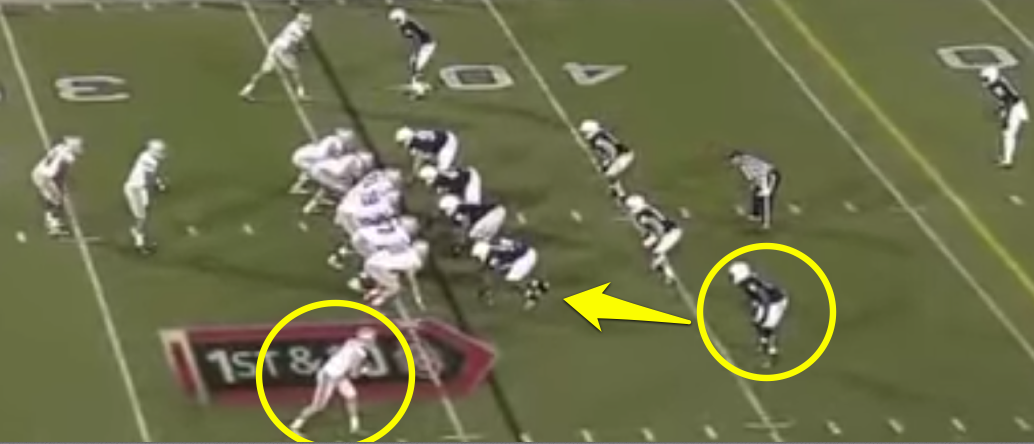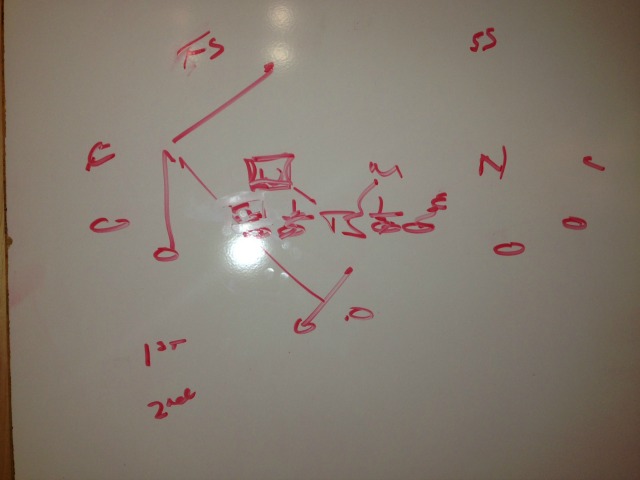Heading into the 2014 season, commentators were abuzz with Urban Meyer implementing aspects of his Florida offense that have been largely absent in his first two years with the Buckeyes.
The hope stemmed from Meyer's recruitment of space players – skill athletes with the lateral quickness to get the ball in space and create explosive gains. The most likely candidates to fill those roles included slot receivers Dontre Wilson and Jalin Marshall, and running backs Ezekiel Elliot and Curtis Samuel. The thought was this foursome could reduce the need to rely upon Braxton Miller as the sole outside rushing threat, thereby reducing Miller's exposure to hits.
With Miller's season-ending injury the hoped-for luxury becomes a necessity. In a recent radio interview, Meyer indicated that Miller's play making accounted for approximately 100 yards per game above what the play would have otherwise generated. The Buckeye offense must replace this production.
Nowhere was Miller's ability more important than creating explosive plays on the edge and in the pass game. Generating explosive plays (often defined as run plays over 15 yards and pass plays over 20 yards) is perhaps the most critical aspect to successful offense. A team's win percentage is directly tied to its points per play. This is self-intuitive. It is much easier to score off several big plays then stringing together multiple long drives. For Ohio State the previous two seasons, Miller was largely the method by which the Buckeyes gained chunk yardage.
But Meyer believes he now may have an answer to replacing some of that production – the H position. By distributing the football to players such as Wilson and Marshall in space, Meyer hopes to replace the edge threat and yardage provided by Miller. Although the hype surrounding this foursome is currently based more on hope then proven production, it is undoubtedly true that Meyer and Offensive Coordinator Tom Herman will rely more heavily this season on plays exploiting this skill set.
The H Position
Any discussion of Meyer's offense in space must begin with what Meyer called the Cadillac position of his offense – the H. More commonly known as a slot receiver, the position is Meyer and Herman's primary method to exploit defenses that cheat additional defenders against the run game.
In overview, a common tactic defenses use to defend spread-to-run offenses is sneak a linebacker/nickel player that is covering the slot receiver into the box.

One response is to quickly throw the football to the H receiver in space. Meyer thus wants a player in that position who can create plays in the open field.
But Ohio State's options in this regard have been limited in Meyer's early tenure. The primary H receiver was Corey Brown. But his strength was more in the short to medium passing game. The Buckeyes lacked a receiver that could fully exploit such openings.
Wilson, Marshall and Samuel more neatly incorporate the running back skills necessary to make plays in this role. And Meyer recently made clear Ohio State would more heavily rely upon the quick passing game. So how will Ohio State do so?
Packaged Plays
As recently discussed, one method to both take advantage of a cheating defense is to package run and pass plays. This begins with simple wide receiver screens. The Buckeyes build quick screens into their base tight zone and power concepts. If the quarterback reads the slot defender overplaying the run, he can pull the football and throw the bubble or flash screen.

In the past two seasons the Buckeye offense has left easy yards off screens to uncovered receivers on the field. Part of that was not trusting a less experienced Miller to consistently make the correct read. But it was also a function of Ohio State not having the potential for explosive plays off screens. As Meyer indicated, they preferred to rely upon Miller, Hyde and their offensive line.
Packaged plays increasingly became a part of the Buckeyes repertoire last season, however. And Meyer stated he intends to deploy more sophisticated packaged plays this fall. Namely, routes that get the football down field. As Meyer diagrammed, one such example is tight zone with a stick route.

Such routes use the same packaged play principles, while getting the football down field vertically.
Short Passing Game
Another Meyer staple is featuring the slot receiver underneath in the drop back passing game. One such favorite is H-option. The slot's goal is to attack the underneath defender and get open inside or outside, depending upon the coverage. In essence, it is organized backyard football where you want your athlete to get open and let him make a play.
Pivot routes are another favorite. As the name describes, on a pivot route the inside receiver begins inside as if on a shallow cross and then breaks back outside. The concept is thus conceptually similar to an option route.
Building upon that route, a staple concept for Meyer is follow-pivot. The H receiver executes a pivot route while a receiver on the opposite side runs a dig. The goal is to create a hi-lo stretch on an inside safety or linebacker.
Although this has long been a Meyer favorite it has been used sparingly by the Buckeyes in his first two seasons. But it was frequently utilized this spring and seems a favorite of new quarterback JT Barrett's.
And Ohio State has even simpler methods to quickly get the football in space. For instance this spring the Buckeyes repeatedly repped flash screens from quad formations.
The goal with packaged plays and the underneath passing game is ultimately the same – quickly get the ball to a receiver on the perimeter in open space vacated by a defender overplaying the run. By getting the ball quickly in the hands of an athlete in the open in a relatively high percentage manner, Meyer and Herman believe it is a simple manner to create explosive plays.
Such options are far more attractive, however, if that receiver can make something happen when they catch it. As Meyer stated
I’m hoping he can throw some short balls and they turn into long gains. We haven’t had much of that around here.
Meyer and Herman hope they now have the athletes to do so.
Jet Sweepin'
A versatile H can also be featured in the run game. One primary method is motioning the H into the backfield to run a jet sweep.
One limitation with shotgun is that it signals that certain plays must go to one side based upon the halfback's alignment. Motioning the H into the backfield creates a balanced look and prevents a defense from running games based on the halfback alignment.
And a jet sweep is another simple method to get an athlete the ball in space. When combined with power read, it stresses a defense by forcing them to contend with either the quarterback keeping or the ball getting to the edge. In limited attempts in the Spring Game, Barrett demonstrated a knack for making the correct read and threatening the defense should they not account for the quarterback.
Lightening the Load
Over the last two seasons Ohio State relied upon Hyde between the tackles and Miller on the perimeter for explosive plays. That production is now gone.
The Buckeyes concluded last season by seeing in person how effective quick hitting edge plays can be when you get the ball to a Sammy Watkins. The potential of players such as Wilson and Marshall in space provides optimism that the Buckeyes can expand their game plan this season.
But except for spurts from Wilson last season, such potential must still be realized on the field. Meyer has repeatedly stated he wants to identify his six best play makers and get them the football.
Following Miller's injury he asserted that those playmakers will now receive four additional touches per game. If Wilson, Marshall and others can fulfill expectations, the Buckeyes' offense can expand horizontally. Getting the football to such players in space is likely the Buckeyes' best hope to begin to fill the void left by Miller's injury.


